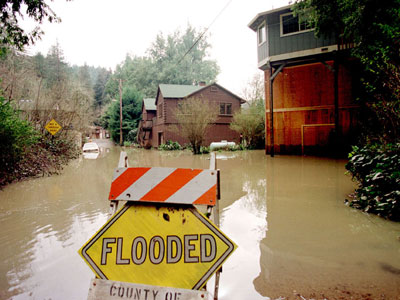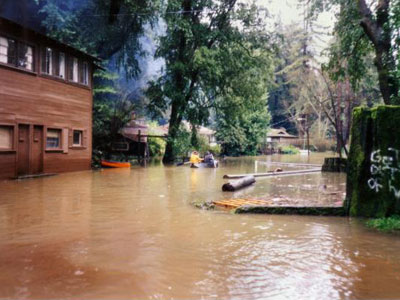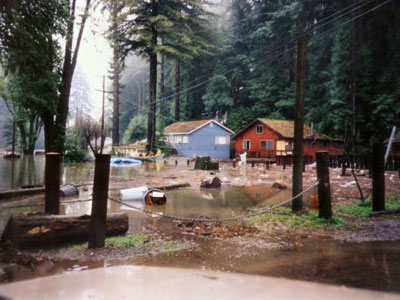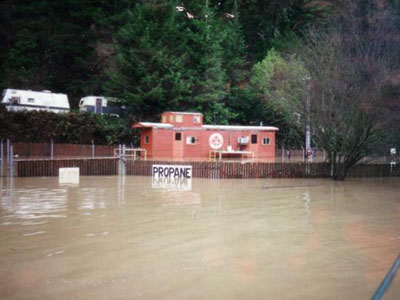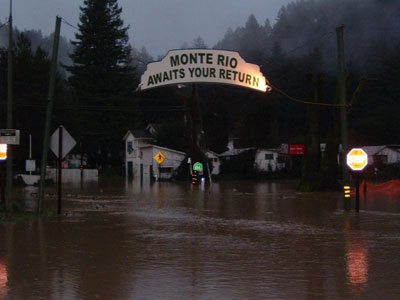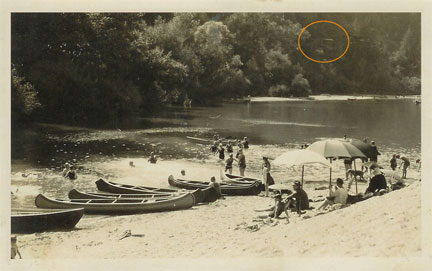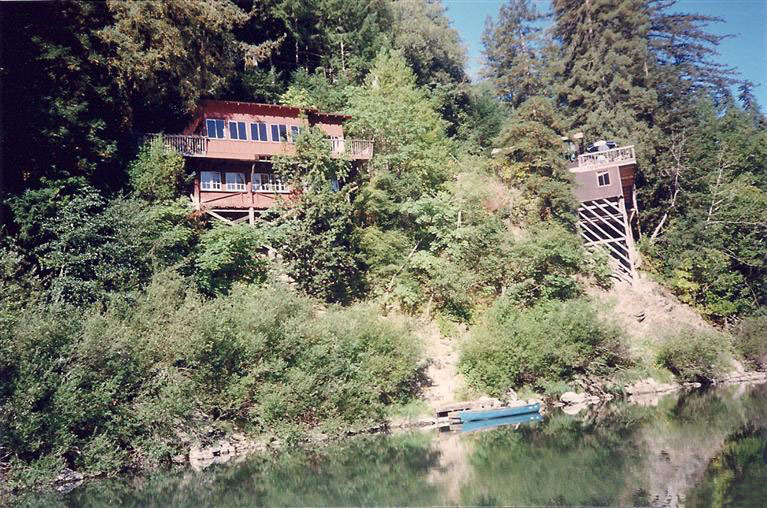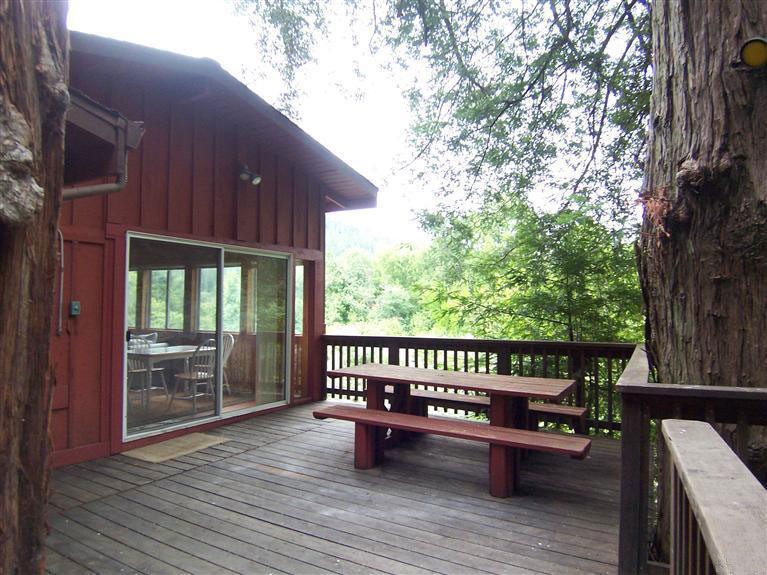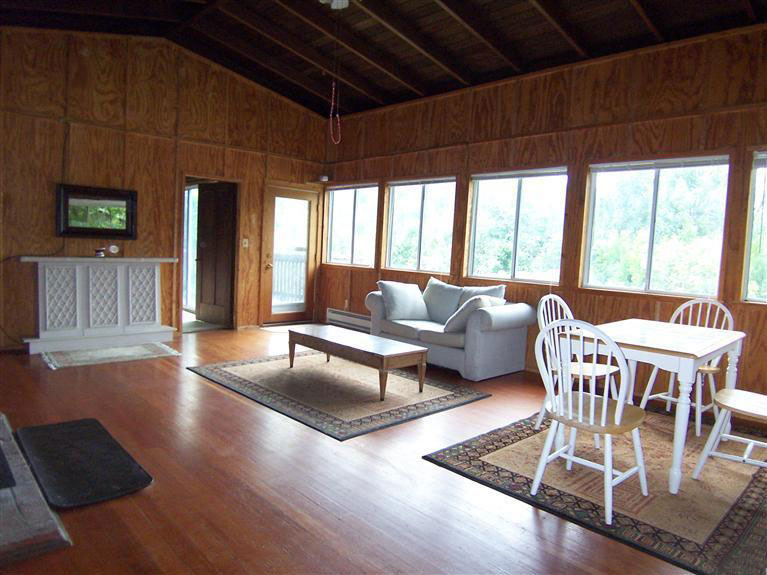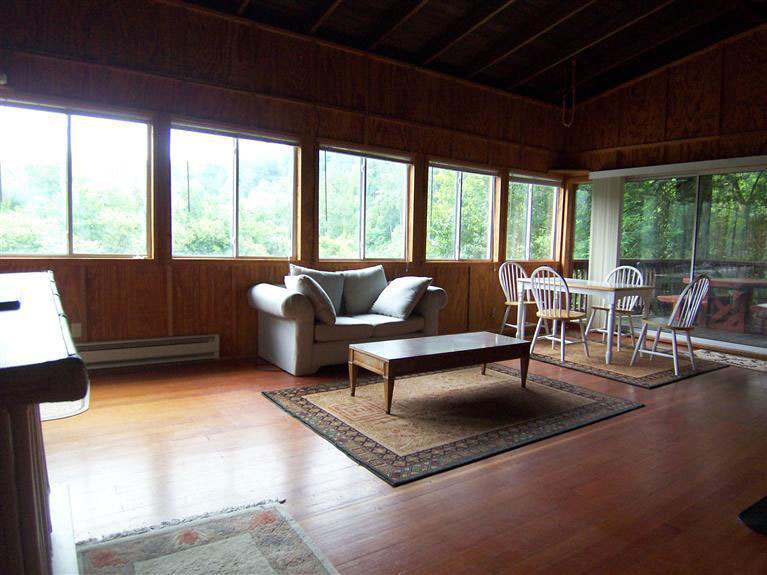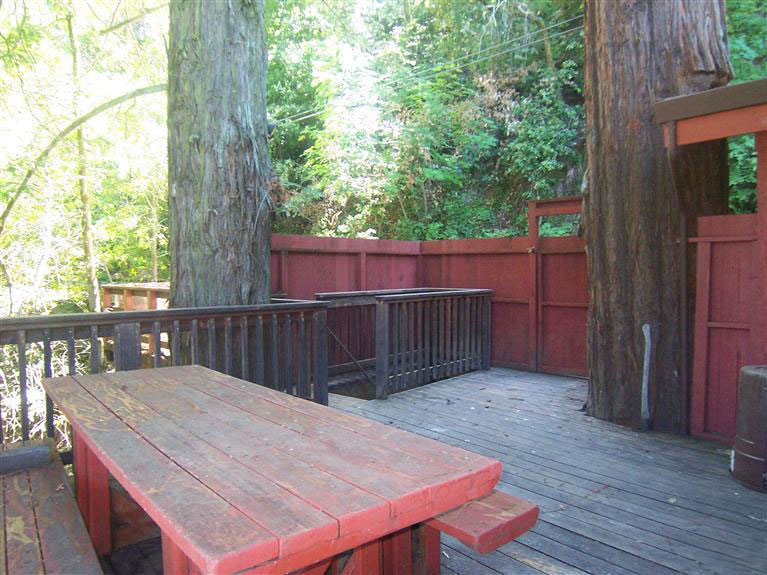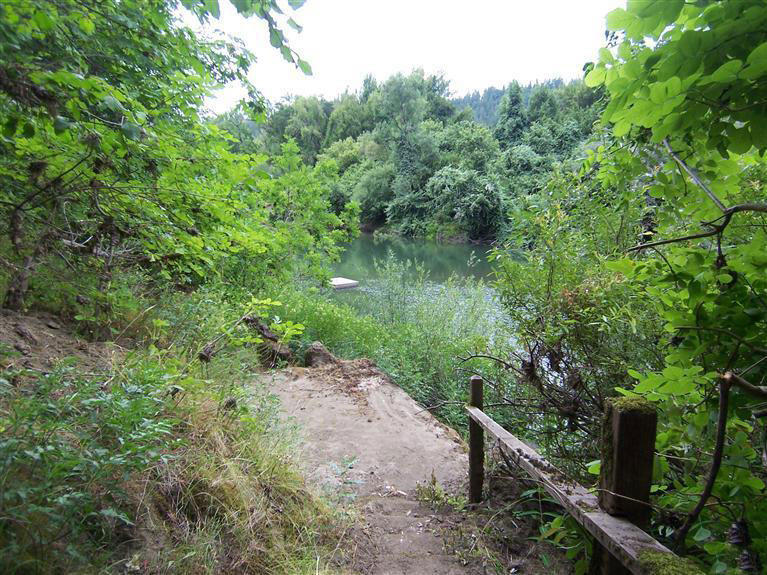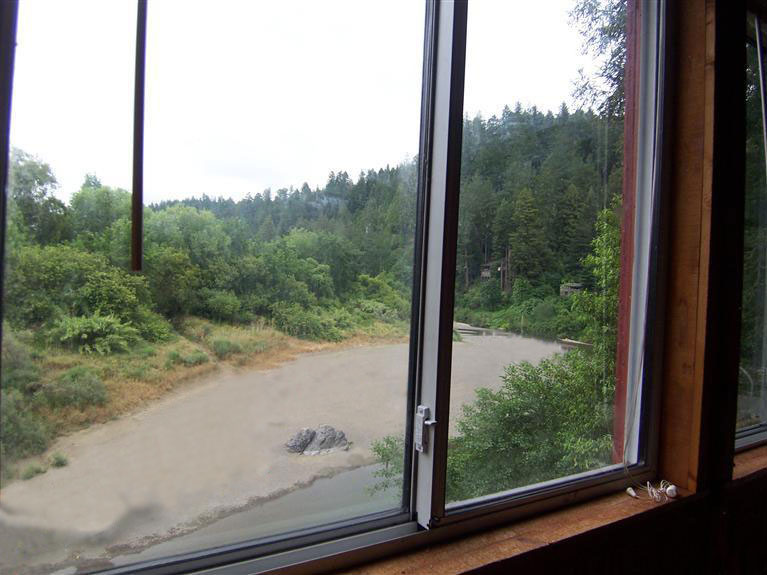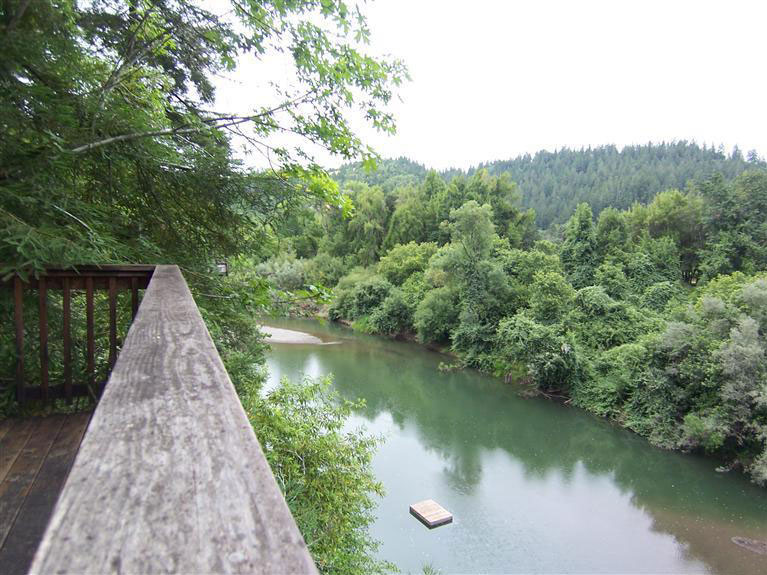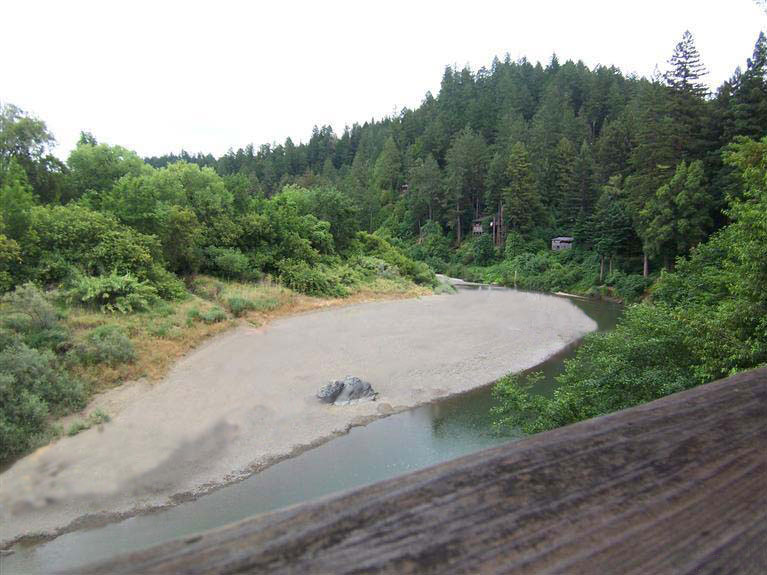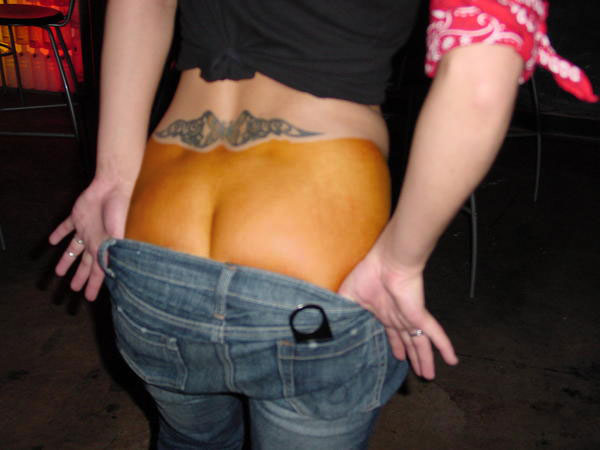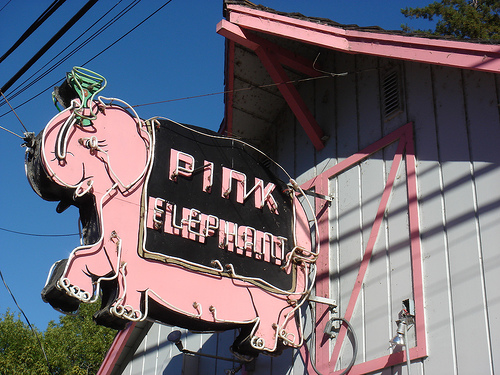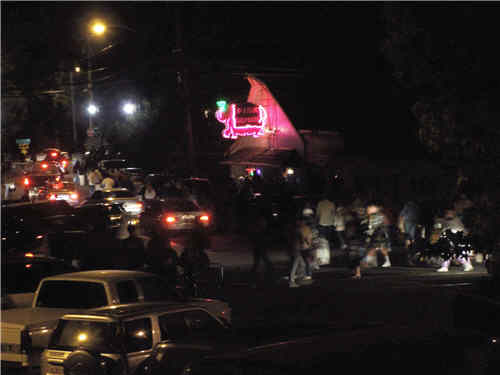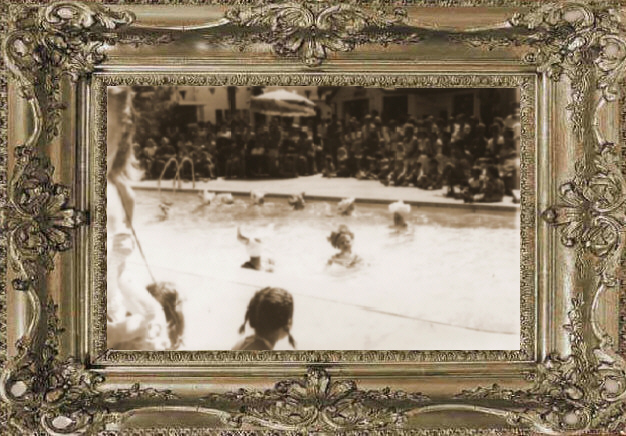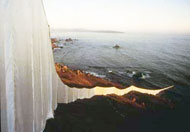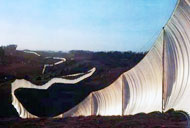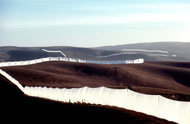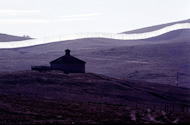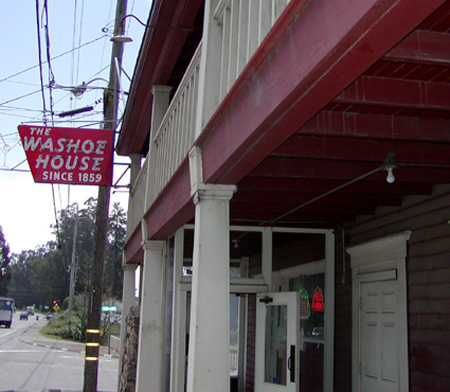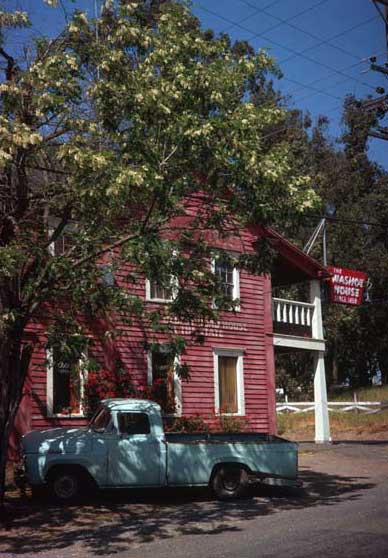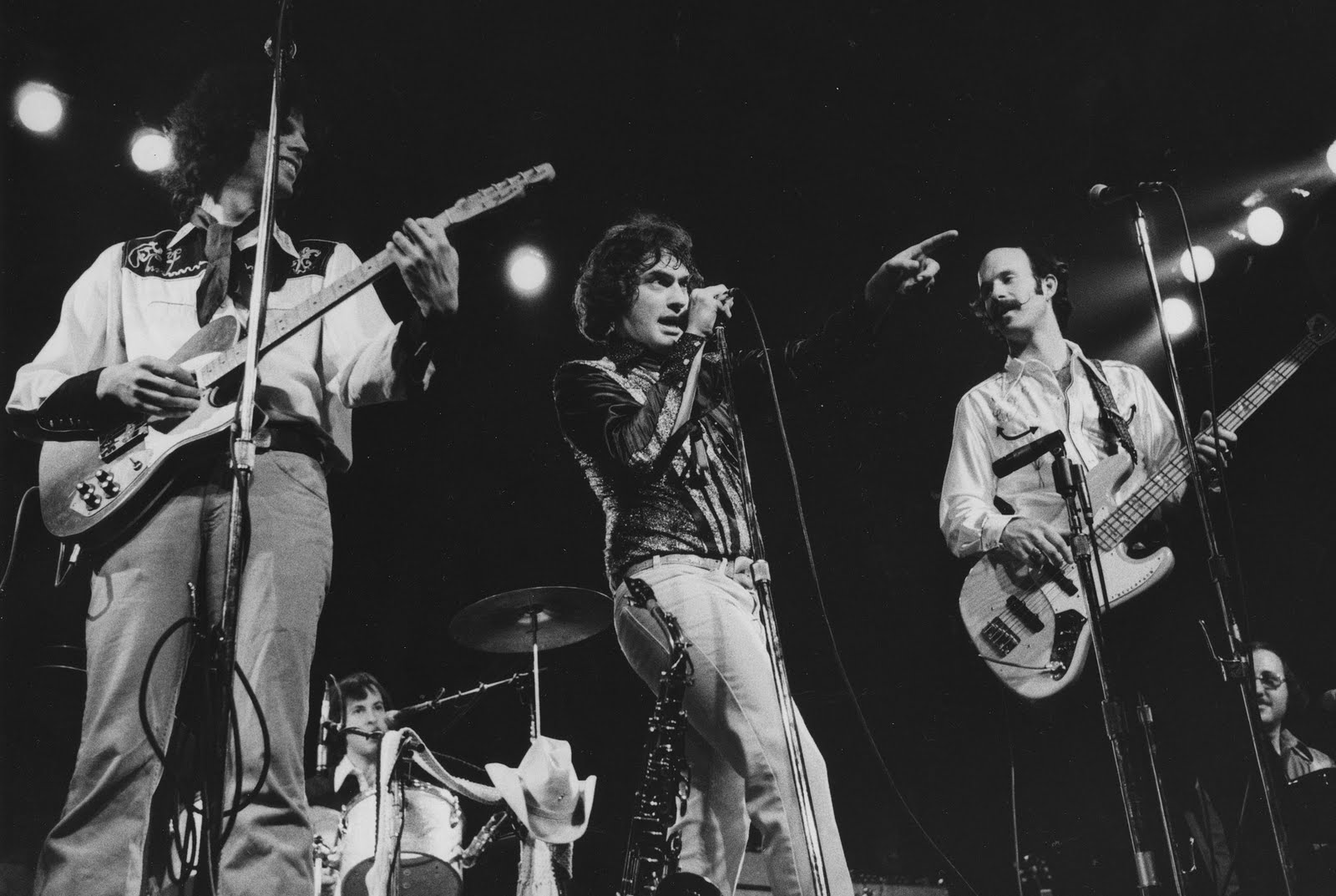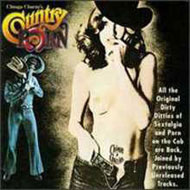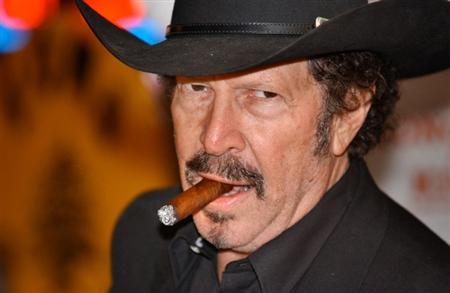Russian River Flood
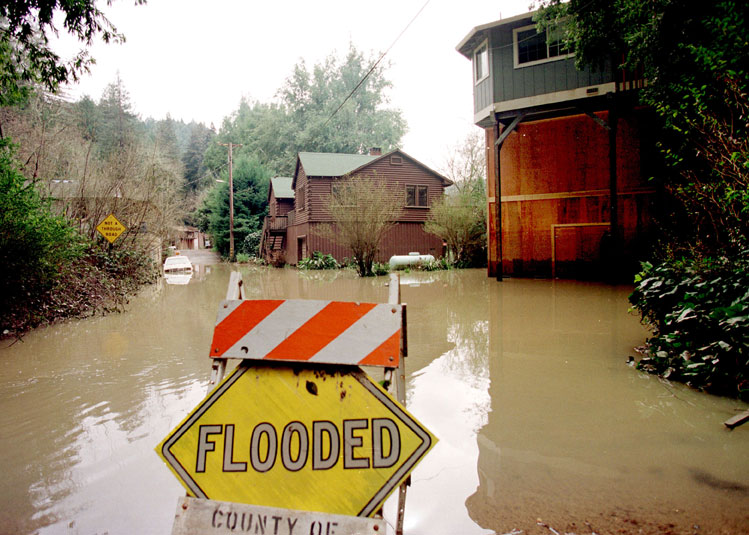
Why didn’t they build the steps ALL the down to the river? That’s what I asked myself after renting the five bedroom cabin which was built alongside the Russian River. That was in June… two years later in January I learned first hand the reason why.
On the 17th the river hit 39.5 feet, the Flood Stage is 32.0 feet. At 32 feet the Old Bohemian Highway at Monte Rio (Pink Elephant) is flooded. At 33 feet a couple of the intersections in Guerneville are flooded along with the Mirabel Trailer Park in Forestville. 34 feet floods Riverside Park, Johnson’s Resort, and the Creekside Resort. Add another foot and the list now includes Parker’s Resort. 36 feet floods the lower cabins in Fern Grove…and 39 feet begins to close the Hacienda Bridge and portions of River Road. Once that happens many residents are basically cut off from travel into Santa Rosa.
I worked in Santa Rosa along with another “river rat”. We’d monitor the flood reports to see if there was a need to head home early or if we could get home at all. She, (Shirley) lived in Rio Nido which was further out River Road than where I lived, but was at the same flood stage of 39 feet. Interesting how the river works; she lived back up in a canyon and I lived in a two story house on stilts at the rivers edge. However, when the river hit 39 feet, we both were stuck. Those who live or have lived in the area may be thinking they’ve seen worse…and rightly so. The river hit 48.8 feet in 1986 and has often hit flood stages of 45 feet or more. In January 1995 the river hit 48 feet only to recede and hit another high in March at 41.5 ft. But at 39.5 it had it’s exciting moments.
For the few of us who lived year long out in Summer Home Park, canoes had been left for us to use in order to get out to River Road. There was a fire road that traversed some of the canyons and acreage owned by Summer Home Park, but you had to have a four-wheel drive, some luck, and a pair of mudders. Walk along Summerhome Park Road as far as you could, grab a canoe to get across the flooded section, along Old River Road and you’re at River Road just before the Hacienda Bridge. The sound of the river rushing below the house is almost as incredible as the image of it during the day. From my living room windows I could look down at the river directly below. What was once a calm, slow move to the sea was now a torrent containing trees and assorted debris from lower cabins. I looked out once to watch a refrigerator bobbing up and down on it’s way to Bodega Bay. I even saw a kayaker, but can’t recall if he was ahead of or behind the refrigerator. Not that he was after it by any means, nor would he have been able to enjoy a cold beverage from it in the unlikely event that he could catch up with it.
